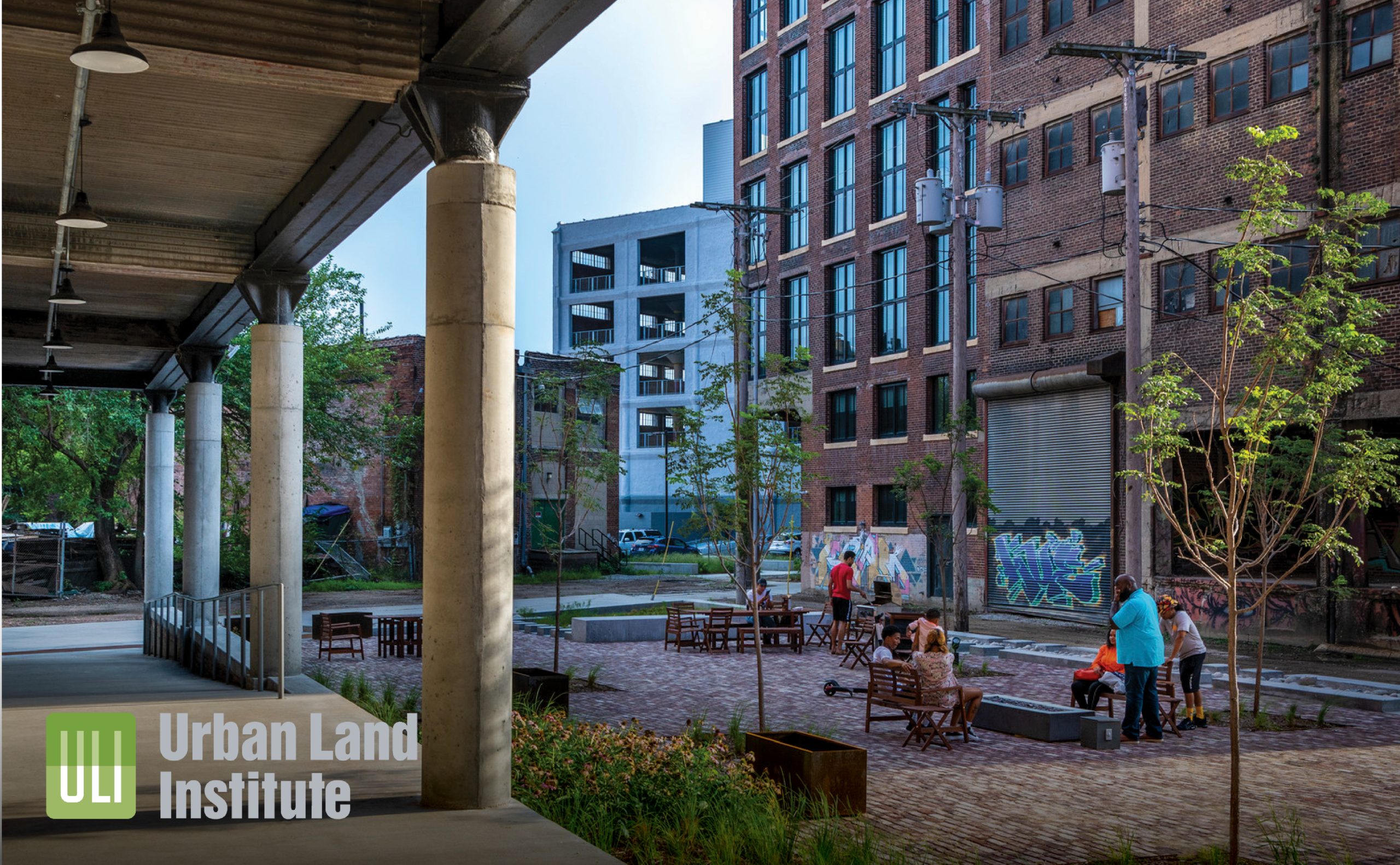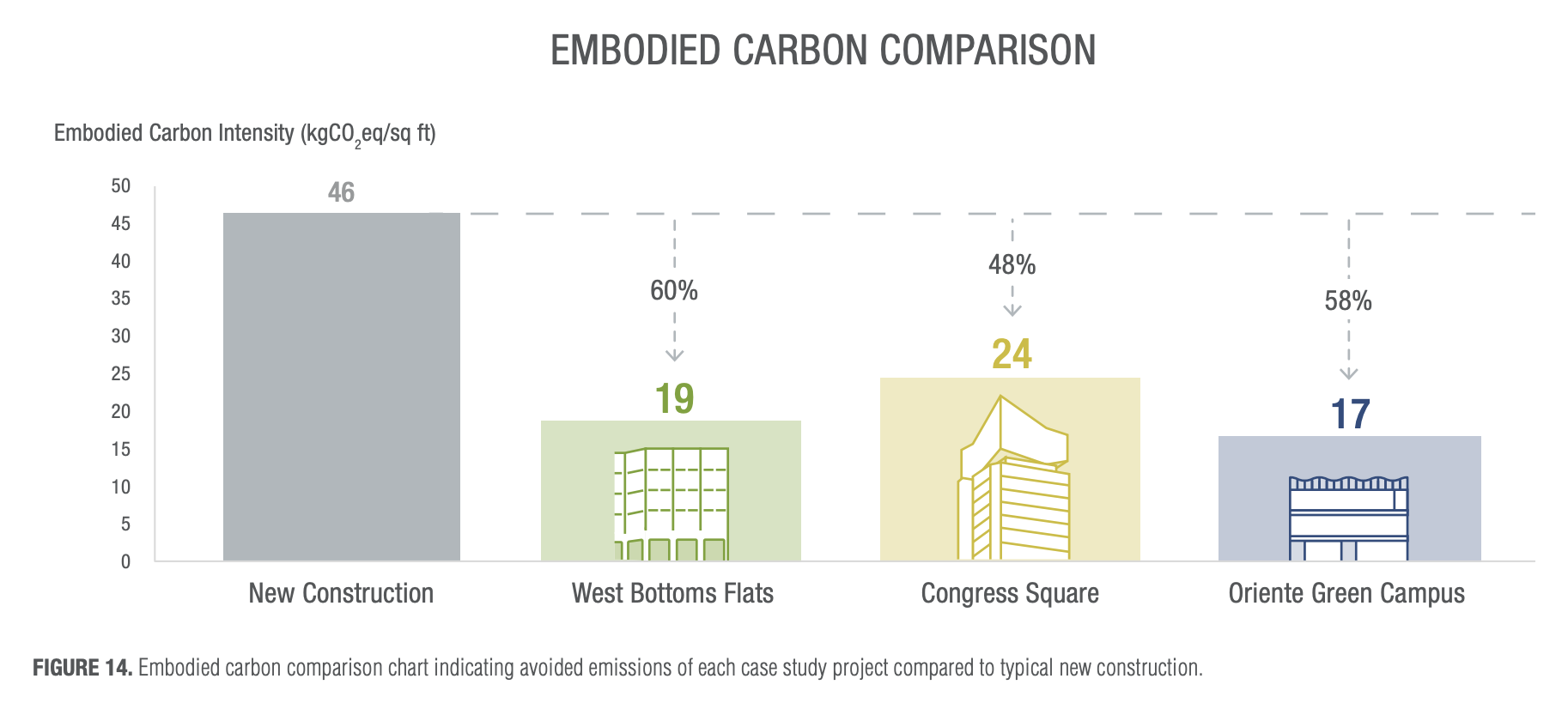
West Bottoms Flats Highlighted in ULI + KPF Adaptive Reuse Report
In June 2025, the Urban Land Institute (ULI), in collaboration with Kohn Pedersen Fox Associates (KPF), released What’s Old Is New: The Business Case for Adaptive Reuse, a report exploring the economic, environmental, and social benefits of transforming existing buildings.
West Bottoms Flats in Kansas City is featured in this report of how creative reuse of older buildings can spark meaningful urban revitalization. BNIM’s design transformed four historic former warehouses in the West Bottoms district of Kansas City, MO, into micro-unit apartments, retail, and shared community spaces. Through the use of historic tax credits, green infrastructure incentives, and property tax abatement, this multi-phase and transformational redevelopment was made possible.
“Adaptive reuse isn’t simply a preservation tactic, it’s a forward-looking development strategy. By creatively repurposing buildings to meet evolving market demand, reuse projects can reduce carbon emissions, catalyze urban revitalization, and deliver resilient, future-ready spaces.”
 Image from Page 47 of What’s Old Is New: The Business Case for Adaptive Reuse
Image from Page 47 of What’s Old Is New: The Business Case for Adaptive Reuse
The report highlights that the West Bottoms Flats delivered substantial social benefits by introducing affordable housing units into an emerging market and supporting the growth of a diverse population. These efforts not only revitalized the buildings themselves but also strengthened the surrounding neighborhood by supporting local business growth and activating public spaces.
With the urgency of climate action and the time-value of carbon, adaptive reuse of existing buildings is critical in reducing embodied carbon emissions. The West Bottoms Flats achieved a 60% reduction in embodied carbon compared to typical new construction, with an embodied carbon intensity of 19 kgCO₂e/sq ft compared to 46 kgCO₂e/sq ft for new construction. To achieve this significant reduction, the design team reused most of the existing structural systems and building facades, avoiding the emissions which occur at the beginning of the building’s life cycle.

Image from Page 9 of What’s Old Is New: The Business Case for Adaptive Reuse
“By the year 2050, 80 percent of the global population will live in cities, and 80 percent of the buildings those people will occupy already exist today. In the United States alone, there are estimated to be 5.9 million commercial buildings containing 96 billion square feet of floor space”
The West Bottom Flats demonstrate how the adaptive reuse of existing spaces brings renewed purpose for the future, reduces embodied carbon emissions, and strengthens neighborhoods through opportunities for housing, local business growth, and activation of the public realm. This positive economic, environmental, and community impact embodies the triple bottom line value championed in the ULI and KPF report.

